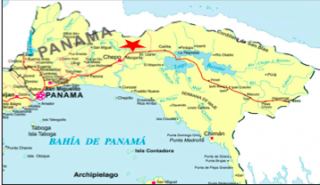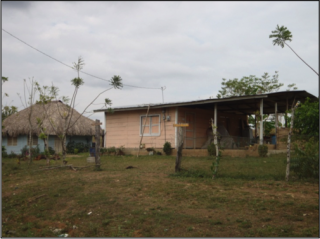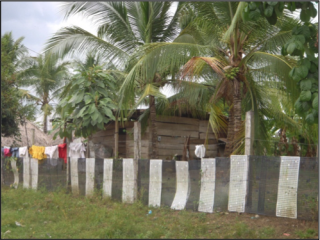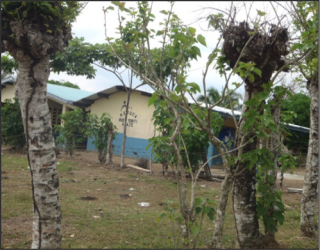Quebrada Cali, Panama
![]()
![]()
![]()
![]()
![]()
![]()
![]() Click on Programs to learn more about their work in this community
Click on Programs to learn more about their work in this community
General Information

| Population* | 100-150 |
| Number of homes | 60 |
| Avg # of people per home | 2-3 |
| Electricity | None |
| Corregimiento | Torti |
| District | Chepo |
| Corresponding Health Center | Torti |
| Distance from compounds | 30 minutes |
| Road conditions | Excellent (5-10 minutes of dirt road) |
* Population does not reflect how many patients will be seen on medical
brigades as many people from surrounding communities come seeking
Medical Brigades medical attention.
Expressed Needs and Capacities
The community is poorly organized and division and conflict exist between the community and neighboring indigenous villages. The top needs expressed by community members are a health center, receiving electricity, and improving their water system.
|
Quebrada Cali has one primary school that holds grades one through six. There are 62 students and two teachers. The school has a kitchen and dining area. Needed improvements include electricity and building a wall to create separate classrooms. The school is located at the front of the community, close to the road. Children travel to Tortí or Chepo for secondary school. Ninety percent of the population is literate.
|
|
|
Quebrada Cali has a gravity-run aqueduct water system that was originally constructed in the 1980s;however a new aqueduct was installed in 2005. The water runs four out of seven days on average,and the water pressure is normal. However a confilct for water exists between the population andan Embera community that lives close by. As a result, the water is not always consistent and thecommunity sometimes goes weeks withoutit. The water is not chlorinated; few boil itand the rest drink it without furtherpurification. Quebrada Cali has a watercommittee of five that meets monthly. All ofthe community is connected to the aqueduct, and each family pays a fee of $1.50 a month which is collected by the water committee’s treasurer. |
 |
Quebrada Cali does not have a Centro de Salud (health center). Community members instead travel to Torti which takes 30 minutes in bus. There are no medical assistants in the village. The most common illnesses are the common cold, diarrhea, and parasites. For dental access, the community must travel to Tortí.
One hundred percent of the community has latrines, 95% have stoves in their homes, and 75% have cement floors. The community receives medical rounds once a year. Outside of this, the community has never received any kind of outside health project. There is no health committee.
The average monthly income in Quebrada Cali is between $160-200. Average monthly expenses total $200. The most common types of livelihood amongst men are agriculture, and raising cattle. The main crops produced in the village are corn, rice, plantains, and yams, yucca, lentils, and beans. There are three small stores and three bars in the town. The population has almost no access to credit within or outside of the community. This is largely due to the fact that almost no one possesses a land title which is required for accessing credit. However around five to eight percent of the population has successfully taken out a loan. The community has never received any type of business formation or education.
|
The community has never had any environmental or waste management education. No system of waste collection exists and as a result everyone burns their trash. No formal form of recycling exists; however a car passes through the community every few weeks to buy recycled good. Only about five to ten percent of the community participates. There has been a lot of deforestation throughout the community, and only 30% the village’s original forest coverage remains. This is due mainly to agriculture, ranching, and community development. There was a reforestation project done in the community; however it was run by a private individual and does not benefit the community.
|
 |
There are no lawyers in the community. Community members must travel to Chepo for legal services. However members reported that it is very expensive and can cost between $300 and $1500 dollars. The main type of legal assistance needed is for land protection. About ten percent of the community has received land titles. The community has never received any educational legal training.
The community follows the general administrative government structure of Panama.
There are no other organizations working in the community.
Medical/Dental and Business are currently the only programs working in Quebrada Cali.
Source of information: Key informant interview
Date of interview: February 28th, 2011
Last updated: January 23rd, 2013
Last Visited: October 23, 2013
